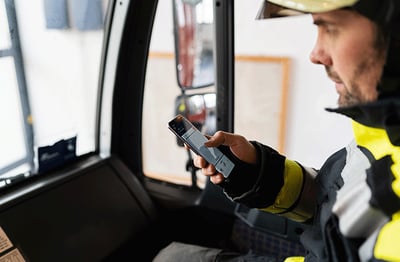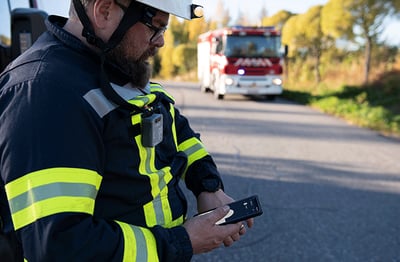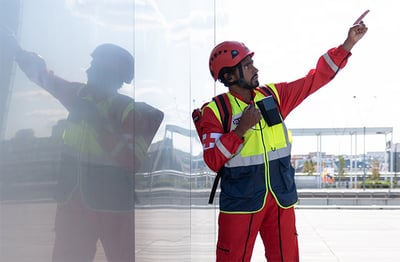- Not considering battery consumption
- Relying on one “sense” only
- Not thinking about indoor positioning
- Using location data only during an incident
- Not defining key use cases first
- Not considering personal data
- Thinking technology is the only thing that matters
This is the sixth in a series of blog posts on how to bring smartphones, hybrid devices, such as Tactilon Dabat, and apps into professional use. We cover many topics to help organizations move from traditional radio communication to a system that adds complementary broadband data.
Learn more: Download 50 powerful reasons you will want to adopt hybrid solutions
Today’s question is: What are the seven most common mistakes about location tracking when bringing smart or hybrid devices into use – and how can you avoid them?
Mistake #1: Not considering battery consumption.
While a location tracking feature is useful, keeping it always on will drain a lot of battery power – the more frequently location data is needed of users, the more battery it will consume. This is why, when taking smart and/or hybrid devices into use, you should consider if you really need to track locations, for example, every 30 seconds, or would it be enough to track locations every 1-5 minutes, or even every 10 minutes.
This way, you can optimize your devices’ battery life so that they last longer.
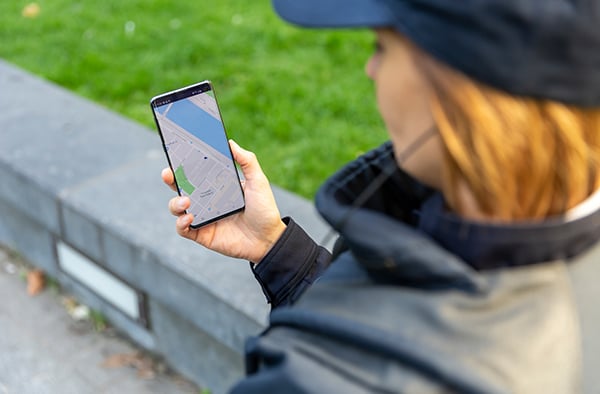
Mistake #2: Relying on one “sense” only.
Today’s smartphones can use several different satellite navigation systems, and some of these systems are controlled by particular countries. The accuracy of location data they provide is thus also controlled. This is why professional users shouldn’t rely on only one source of location data – doing so could mean the accuracy of the data may not be sufficient at times.
For example, the location data of self-steering vehicles must be really accurate at all times. Let’s say a self-driving vehicle steers containers in the port. It’s not safe if it moves a meter too far while negotiating a corner. This is why Tesla vehicles, for example, do not rely on one “sense” only, but on several “senses”, consisting of cameras, radars, and sensors. Humans don’t rely on one sense either, reducing risk by using many different senses to observe our environment. The same goes for professionals when using location data.
Mistake #3: Not thinking about indoor positioning.
While GPS can determine the precise position of any person or object outside buildings, it is not that accurate inside buildings – you can see a person’s or object’s approximate whereabouts, but the resulting location is typically not accurate enough to be useful.
This is something to consider if location tracking is needed indoors. And this is where indoor positioning apps such as the Guardian (SenTAct) and Steerpath apps from the Airbus apps ecosystem come in – both of these provide accurate location data in places where GPS can’t reach.
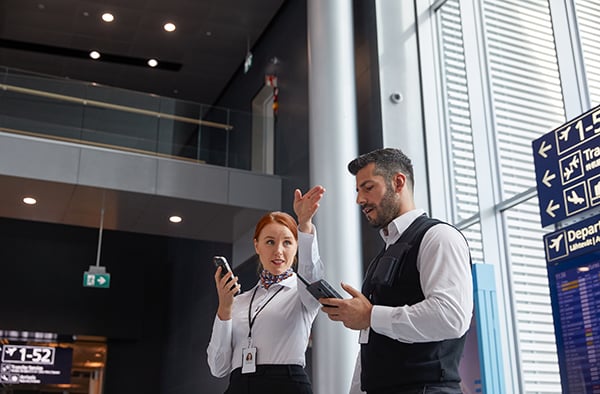
Handpicked related content
Critical push-to-x is a service that gives professional smartphone users reliable access to voice, video, multimedia and location information, together with instant sharing with a defined group of people at the push of a button. Too good to be true? Your dreams come true!
It's here: Tactilon Agnet 500 - The critical push-to-x service of your dreams!
Mistake #4: Using location data only during an incident.
A successful response to an incident typically requires a good understanding of the situation. With an advanced location tracking solution, you can get a better picture of what is happening, allowing you to make better decisions not only during an incident, but also before and after the event. For example:
- Before an incident: Location information can be used for planning alongside historical information. For example, maps can be used to define routes and follow them, even if the exact location is not known. The device can help depending on how the routes are planned.
- During an incident: As well as people, you can track the location of other objects, such as sensors, cars and machines during an incident. For example, during a forest fire, the map can show many different points of interest, giving a better picture of the situation. This can help plot the forest fire outbreaks, allowing you to manage them better.
- After an incident: Location data can also be useful after an incident, to help you optimize your performance. For example, you could see how your trucks are moving or how your installation team is moving in the factory or city, analyze the data afterwards, learn from it and improve your operations.
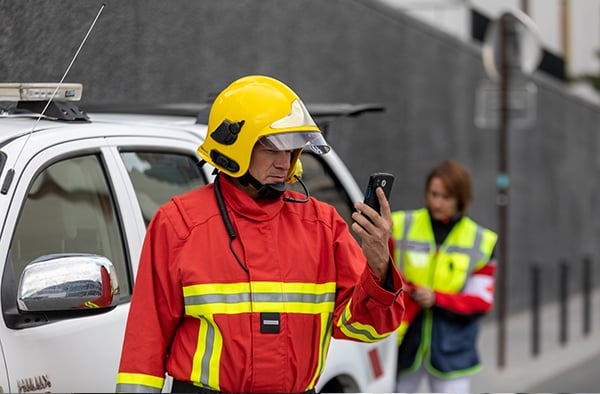
Mistake #5: Not defining key use cases first.
Besides location tracking, location data can also open a world of other new possibilities for organizations. Geofencing, for example, is a location-based service in which an app or other software uses GPS, RFID, Wi-Fi or cellular data to trigger a pre-programmed action when a mobile device enters or exits a virtual boundary set up around a physical location, known as a geofence.
For example, if you want your mobile users or devices (or certain groups of people) to stay in a particular area or if a device gets stolen, movement out of the defined area can trigger an automatic alarm or notification. If needed, the system can be set up so that the applications will only run in a certain area. A number of different rules can be attached to geofencing.
Geofencing brings a lot of opportunities, but to take a full advantage of it, you need to define your key use cases first before bringing smart or hybrid devices into professional use. This way, you can be more confident that your choice will meet your needs.
Mistake #6: Not considering personal data.
When it comes to location tracking of people, organizations need to take relevant legislation into consideration. In the EU, for example, according to the GDPR (General Data Protection Regulation), location data can qualify as personal data if it relates to an identifiable individual. This means that if organizations are tracking location data that is identifiable, there are many obligations governing how this data should be stored and processed. First of all, organizations need to have consent from the people from whom they collect personal data. People also have the right to access/obtain, correct and erase the information organizations hold about them.
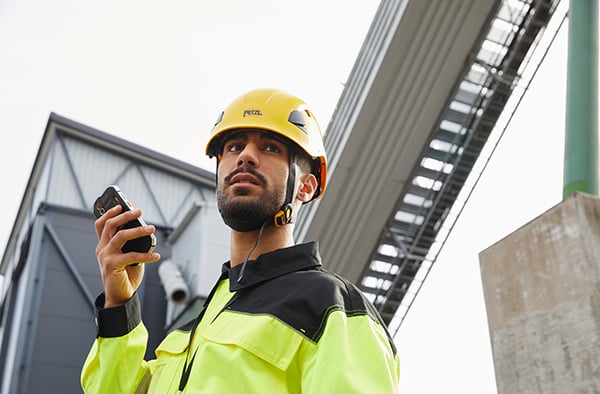
When tracking employees’ location data, it may not be easy for all employees to accept that their movements are stored in some sort of information system, particularly if their location is being tracked and stored even outside working hours. If you’re planning to track your employees’ location data, you should think when it makes sense to track it. Also, you need to think how to get your employees’ consent to track their location data – whether to ask each employee individually for their consent or let them decide by themselves if they want to share their location with others. It is also possible to track all employees’ location data without their consent, but in that case, you must ensure that employees understand how you handle their data, and how you ensure its privacy and security.
You should also be aware that on Android devices, users or yourself need to give apps permission to use location information. If this information isn’t really needed, then consent should not be given.
Mistake #7: Thinking technology is the only thing that matters.
Location tracking of people and objects can be extremely useful for organizations. However, when bringing smart and/or hybrid devices into professional use, technology is not the only thing that matters or the first thing that should be looked at.
It is vital to look at your existing operational procedures and models, because a location tracking solution (as with any other solution) needs to fit the operational needs or the goals of the users, for example trying to increase security or efficiency of your operations. Once that’s clear, then the information systems can help to achieve this. Otherwise, you might be getting new technology just for the sake of it, with no real benefits for your users.
When moving to broadband, hybrid solutions are the lowest-risk choice. It is not practical to simply replace traditional radios with smart devices. A better approach is to use digital or even analogue radios and LTE/4G/5G devices together during a hybrid phase. And here are 50 reasons you will want to adopt hybrid solutions:
This was the sixth in a series of blog posts on how to bring smart and hybrid devices into professional use. The first five blog posts in the series tackled these topics:
- Manage your smartphones, hybrid devices and apps – professionally
- How to use TETRA and smartphones in a hybrid way
- Battery life: What to look for in your duty smartphone
- 15 things your boss expects you to know about RFID, NFC and IoT
- Why professional smartphones need secure, special gadgets
When you have mission-critical broadband and can adopt smart devices for your critical operations, it is important to learn “The first things you need to know when your organization wants to adopt mission-critical smartphones and apps”.
And if you’re keen to know how to get the best of professional radio and combine it with all the advantages of modern smartphone apps, read this blog post: This is what professionals really want to know about hybrid devices.
Editor's note --
This blog post was first published in December 2020 and it has since been updated with links to relevant information that was published later.


